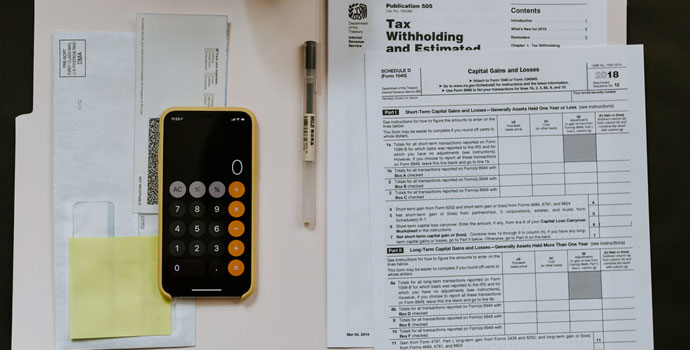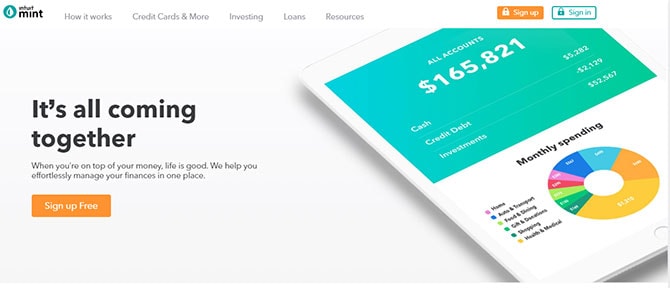Whether you need the income or not, you might be wondering if there are jobs for retired teachers out there.
This may be strange for some people; most people think of retirement as a chance to move to a warmer state, hang out with their grandkids, and take up new hobbies.
But not everyone wants to spend their retirement this way.
Maybe you feel your retirement benefits aren’t enough to live on. Or maybe you don’t want your brain to become idle.
For whatever reason, retirees nowadays are more interested to pursue a job after retirement than previous generations.
Even so, most retirees would want to pursue a job that may not earn them as much money as teaching but that is significantly less stressful.
Today, we’re going to list down jobs for retired teachers to help you plan for life after teaching.
Jobs For Retired Teachers Who Still Want To Teach
There are plenty of reasons for teachers to retire: physical health, mental health, and family concerns are just some of them.
But the good news is that if teaching is your passion, you don’t have to quit teaching entirely after you retire.
Here are some teaching-related jobs for retired teachers.
1. Tutoring
Teaching to tutoring is probably the most natural transition for a retired teacher to make.
You can either do online tutoring, wherein you can do face-to-face lessons with a student over video conferencing, or part-time private tutoring.
The most popular jobs are online English teaching jobs and those involve teaching English to foreign students or to local students who are non-native speakers and want to go to college or university in the US.
However, you can teach a variety of subjects: math, science, history, or English. You can also work with students from different levels: middle school, high school, or college.
It’s up to you to pick and choose which students you want to tutor and which subjects to teach.
Bear in mind that online tutoring foreign students would probably entail working at night or in the wee hours of the morning, depending on the time zone of your students’ country.
Private tutoring hours may be closer to “normal” or daylight hours, but you may be asked to be available for weekend tutoring.
Being a private tutor would require some advertising, but if you’ve just retired, you can start spreading the word to your former students that you’re doing private tutoring so they can tell their siblings and parents.
You can quickly build a customer base with just word of mouth, but you can always utilize social media advertising as well.
You may also have to get additional certifications, but that depends on the requirements of your potential employer.
Tutoring offers more flexibility than classroom teaching, plus paperwork is at a minimum, except for your educational materials, so this may prove to be a less demanding career for you.
See our full list of online tutoring jobs here.
2. Creating And Selling Lesson Plans
Creating, editing, and updating lesson plans are probably some of the most tedious tasks for teachers.
If they can outsource the creation of these lesson plans, they’d focus more on editing and updating the lesson plan so they can adapt to the changing times and the various types of students in their classroom.
You can fill this pressing need by making and selling lesson plans for teachers to buy and use in their classrooms.
They benefit by saving time and getting a lesson plan made by a teacher who has experience and expertise; if the lesson plan is effective for one teacher, then it’s very likely that it is effective for another teacher.
It benefits you because you not only earn income but recurring income, as you can sell a single lesson plan to multiple teachers over time.
Also, you get to share your knowledge with the new crop of teachers and contribute something meaningful back.
You can sell your lesson plans on Etsy, or your own site if you can manage it, but it’s more advisable to find teacher marketplaces where your audience and potential buyers are all teachers.
3. Test Scoring
Another supposedly tedious task is checking and grading homework and essays, but some teachers genuinely enjoy reading and evaluating their students’ work.
If you’re one of these teachers, you’re in luck! A number of testing services and schools are outsourcing their scoring tasks to third parties, especially to teachers and retired teachers.
To qualify for these jobs, you usually need a bachelor’s degree, and some need a bachelor’s degree in a specific subject.
Online grading is seasonal for most testing companies because standardized testing is typically done in the spring and the fall.
Resources:
4. Academic Consulting
Consultancy, particularly academic consultancy, is another field where contributing your experience is worth at least some money
Here are a few consulting jobs for retired teachers:
Homeschool Consulting
There are many reasons why parents might want their children to be homeschooled: bullying, being an asynchronous learner, or simply because traditional school is not a good fit.
Parents who are only starting to homeschool their children almost always need help starting, especially with matters such as curriculum and daily lesson plans.
Although you’re probably a product of the traditional school system, your insights on drawing up a lesson plan that will benefit the child in terms of getting the education they need while thriving in a home environment.
Also, you can enlighten clients in terms of legal requirements, resources, information, and networking with other homeschooling parents.
The first step is to research all of this information so you’re ready to provide quality service to your clients.
Laws surrounding homeschooling differ between states, so be careful and strictly follow the laws that apply to the state where you intend to do your consultancy.
Resource:
How to Be a Home School Consultant
Educational Consulting
Another consultancy job that you can do is consulting for school districts in various aspects.
You can offer your help in improving the curriculum, incorporating the latest technologies, managing classrooms, fine-tuning teachers’ performance, or increasing students’ test scores.
Resource:
How to Become an Educational Consultant
5. Substitute Teaching
If the lure of the classroom is too strong and you’d like to continue making a difference in students’ lives, becoming a substitute teacher is a good transition job for retired teachers.
It allows you to teach and impart your wisdom on students without the pressure and stress of standardized tests. At the same time, your students can teach you so much about culture and technology so you don’t feel to isolated or disconnected.
However, your schedule would have to be flexible enough to be available to take on a teaching job when the school needs it and to teach any subject they ask you to.
Also, if your teaching career was with the state, and you want to be a substitute teacher for the state as well, you have to take care that you limit your work hours and earnings so you don’t violate your pension agreement.
A workaround is to teach in a private school or work with an organization to not violate your pension agreements.
Jobs For Retired Teachers Who Want A Career Change
The word “retirement” might signify an end of something, but it can also signify the beginning of something new.
It just might be time for a career change.
Here are some second careers for retired teachers.
6. Mentoring
Being a mentor probably comes naturally to teachers because that’s what teachers do every day for their students.
You might have retired from teaching, but you can still be a mentor; not to your students but to other teachers who are currently teaching so they can realize their full potential.
A mentor needs to be able to reassure, inspire, provide feedback, and give advice to new teachers.
If you think you’re up to the challenge, you can look for mentoring programs in your local school district or directly to the schools.
Resource:
Resources for Mentoring Programs
7. Writing
As a teacher, you’ve probably done nothing but write: lesson plans, emails, exams, letters, emails, and all the educational materials expected from you as a teacher.
At this point, you’d have gathered much experience writing for different audiences, making you more than qualified for a variety of writing jobs.
You can find freelance jobs as an article writer for various blogs and websites, or you can apply as a regular writer for a single website.
The flexibility you get in terms of hours and topics to write about should be a good incentive to be a freelance writer, but if you want recurring income, maybe writing a book is more your speed.
Writing an eBook allows you flexibility as well in terms of time and subject, but freelance writing gets you paid per article (or per hour) while an eBook gets you paid for every copy you sell.
Self-publishing can be daunting if you don’t have the experience, but there are plenty of resources to help guide you from writing the eBook to become published in Amazon Kindle Store.
Working with a publisher to sell a physical book is another option, and it’s actually a better option if you’re planning to write a textbook specifically.
Reach out to known publishers and present your résumé and your book proposal or pitch.
Resources:
8. Editing
If writing still sounds like more work than you’d like to take on, perhaps editing is a better fit for you.
As a teacher, you likely had an excellent grasp of how to organize and rephrase content such that it’s ready for publication or presentation.
Needless to say, your spelling, grammar, and punctuation need to be superb as well.
The great thing about working as an editor is that you can do it full-time, part-time, or on a freelance basis.
You can work as an editor for a publishing company and edit all kinds of published materials. Your expertise may be in textbooks and other educational materials, but there’s no stopping you from editing young adult, suspense, romance, biographies, and even cookbooks, if those interest you more.
You can also edit blog posts and articles for a blogger or multiple bloggers if you’re comfortable with website publications.
9. Research
There’s no lack of online research jobs for retired teachers; after all, research is another area that you should have plenty of experience in.
You should be all too familiar with research methodology: how to vet your sources, determine which information is relevant, organize the information, and present it in an engaging way.
You’re even free to select what broad area of research you want to go into, depending on your expertise and/or preferences. To name a few, there’s academic, education, medical, legal, technical, social, and marketing research.
Going into research also means you can take either online or in-office jobs, whichever is available and whichever you prefer.
10. Caring For Children
This one is probably not for you if being around children stresses you out.
But if you’re a regular Mary Poppins around children, being a babysitter or a nanny can be a lucrative job for a retired teacher.
Babysitting requires you to supervise and care for children for a few hours at a time while their parents are away on a date or doing other responsibilities out of the house.
Being a nanny is a greater responsibility; nannies are heavily involved in housework and chores aside from taking care of the children. You can expect to be asked to do some grocery shopping, cooking, cleaning, helping with homework, doing dishes, feeding pets, and other work around the house.
Regarding the pay, you would expect nannies to be paid more than babysitters as it’s more hands-on and more consistent. Being a nanny is more work, though, so that’s something to consider.
Offering tutorial services to your clients provides the potential to make more money. This is taking on even more work, but if you love teaching children even during your retirement, this is another option you can consider.
The Bottom Line
There are plenty of different jobs for retired teachers; that is if you know where to look.
Here are some pointers when making that transition to a second career:
1. Assess your professional skills and traits.
Start by visualizing your role as a teacher and list down everything that you were responsible for.
Tasks like preparing lesson plans, creating educational materials, and of course, instructing students with varying aptitudes and dispositions.
2. Keep your mind open.
This list has a lot, but it doesn’t cover everything.
Aside from the job possibilities I’ve listed above, consider alternatives as they come.
This applies as well to finding and gaining new experiences that may not necessarily be in your comfort zone.
3. If needed, get additional training and certifications.
When you do decide on your second career, do your due diligence and research everything you need to have so you can be qualified to do your intended second degree.
4. Don’t give up.
If things don’t fall in place immediately, don’t get discouraged.
Keep learning, networking, and applying for jobs. Stay prepared and motivated so you don’t lose sight of your goal.
And be sure to browse our master list of ways to make money after retirement to help you find the right post-retirement job or business.






























